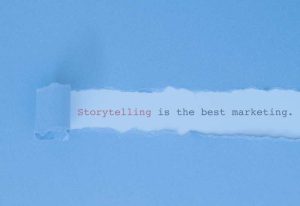
A good infographic is like a billboard standing by a speeding highway. It conveys the message quickly, effectively and does not require much involvement. There is one condition: it must be well prepared. Contemporary marketing communication – especially the one on the Internet – is constantly accelerating. Customers rush through various pages and spend literally fractions of a second on subsequent messages. There is no room for lengthy arguments here. You have a tiny moment to attract attention. Then your image becomes your best weapon.
Why is it so important?
Various studies show that the brain is able to receive and understand visual messages up to 60,000 times faster than text. In a world where every second counts, it’s a priceless advantage. Therefore, it is not surprising that over 70% of marketers base their online activities on various visual forms. Why? Because they are the perfect answer to the challenges of modern communication. They are able to convey your content quickly and effectively, and browsing them is pleasant and does not require much involvement. I will tell you about 10 elements that make your infographic not only aesthetic and interesting, but also simply effective.
Use a metaphor
One of the most important elements determining the success of an infographic is creativity. Materials devoid of an interesting idea will merge in the crowd. Unfortunately, it is not enough to arrange a few pieces of information in a nice picture. Be open to non-standard solutions, surprise the recipient. You can achieve this by comparisons or associations. Various types of visual metaphors will be perfect here. When talking about the increase in revenues, instead of dry numbers, you can show, for example, climbing the next steps. The picture stimulates the imagination.
Adapt the presentation to the data
What visual form you use depends largely on the content you want to present. Different solutions are suitable for numerical data, others for presenting ideas, and still others for showing processes. Analyze the information and think about what form will be most appropriate for them. If you lack an idea, you can use one of three popular schemes that appear in many infographics as a starting point:
- Heroes. Many infographics visualize different kinds of characters. They can be metaphors of your clients, representatives of your company, but also personifications of the problem you are talking about. Does the topic of your infographic allow you to introduce someone to it?
- Chronology. Information related to time or processes is a very common topic in infographics. If you want to discuss some events or show cause and effect, visualization will help the recipient better understand the message.
- Comparison. Visually, various types of combinations also work great. When we want to show two extreme situations, states or outline some contrast, it is also worth to underpin it with an image.
Tell a story
Effective communication requires an appropriate structure. The more chaotic and random your project is, the less impact it will have on the recipient. You have to dress it up in some coherent story. Even a simple division into introduction, development and conclusion will help.
- Rethink the introduction. Make sure you have a catchy headline. It is what will attract attention to all the material. At the beginning, also briefly outline the context and topic you will talk about.
- Surprise with the development. Shock, make you think, ask questions. Just like in a good story, the recipient can’t get bored looking through your infographic. The information you provide must be new and valuable to them.
- Call to action. Only at the end think about call to action. When the recipient has learned the whole context and received valuable information from you, they will be more likely to respond positively to your request.
Match the content with the image
Don’t treat visuals only as an add-on or embellishment. Any illustrations, icons, charts, colors and other graphical treatments you use should convey the content itself. Aesthetics are important, but the greatest strength of infographics is telling through the image.
Make sure your content is broken down
The more clearly the material is divided into smaller sections, the greater the chance that the reader will get to know it. Recipients like content that they can learn bit by bit. If the information blends together, it becomes overwhelming and discouraging.
- Take care of subheadings. Divide the content into several blocks and prepare a separate title for each one, which will be an element of content navigation.
- Separate blocks. Try to visually separate individual information from each other. Use different backgrounds, frames, etc.
Choose colors consciously
Color is the first graphic element that the human eye notices. Colors not only affect our sense of aesthetics, but also evoke certain emotions. Choose colors in terms of what impression you want to make and what topic you are talking about. However, it is not worth exaggerating with the number of colors. The most shared infographics usually contain a maximum of three colors.
Claim authority
Your message will be more effective if the data you show is credible. From the audience’s perspective, authority can be understood quite broadly.
The elements that make the information credible include:
- statistics – various types of research, reports and analyses,
- experts – statements of people with confirmed knowledge and experience,
- case studies – examples of situations in which specific information has been verified in practice.
Adjust the length
The average size was 800 px wide and about 2600 px long. It follows that the length of a typical infographic is roughly three times its width. Try not to make your infographic too long. The best proportions are 1:3, maximum 1:4 in relation between width and length.
Don’t underestimate the text
Although infographics are mainly associated with images, the texts contained in them cannot be underestimated. Research also shows that there are almost 400 words in a good infographic, which is quite a lot for a typically visual material. The text should not only harmonize well with the image, but also be a value in itself – attract attention and be remembered.
Follow trends
Visual issues are highly sensitive to changing trends. What was popular a few years ago may be completely outdated today. This applies to fashion, interior design, car design, but also infographics. In order for your projects to meet modern standards, you need to follow current changes and create solutions that will be tailored to them. The current fashion in graphic design is best reflected by popular websites for the creative industry.
Summary
Infographics are a very effective marketing tool, but only well-prepared materials have a chance of success. Many marketers, attracted by the potential effects, test this form and meet their strong disappointment. When deciding on this type of communication, you need to have an interesting idea and a clear vision of how you will present your information. Aesthetics and compliance with modern trends are also extremely important. However, visual communication is no longer just one of the possible options. The exchange of information is constantly accelerating and the image becomes an excellent carrier. The sooner you master this specific language, the sooner you will start to benefit from it.
Check out our CRM system that will help you improve your marketing.
Follow our Facebook for more information.




